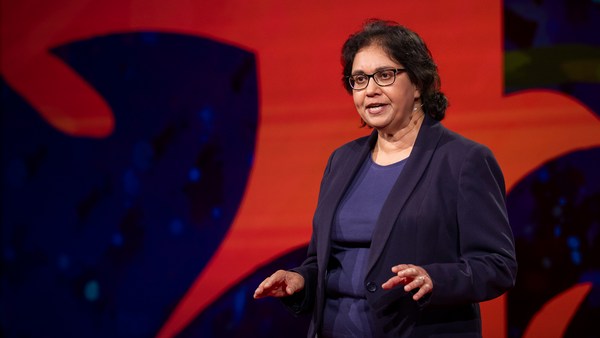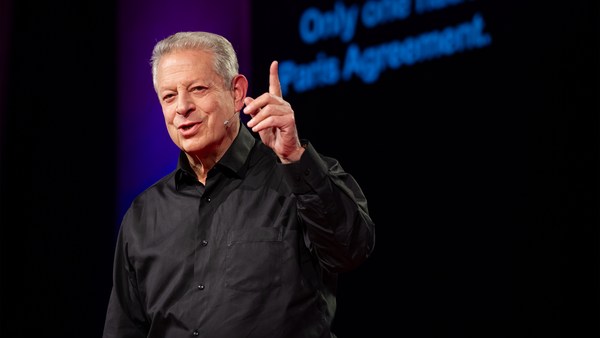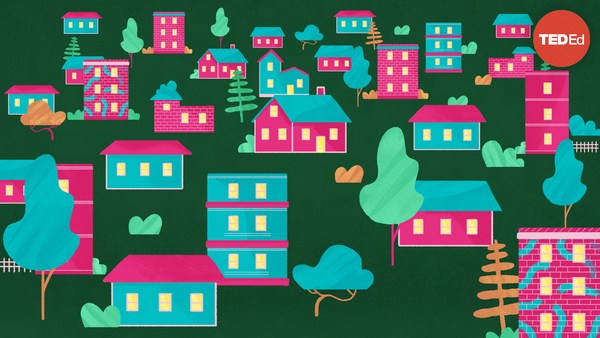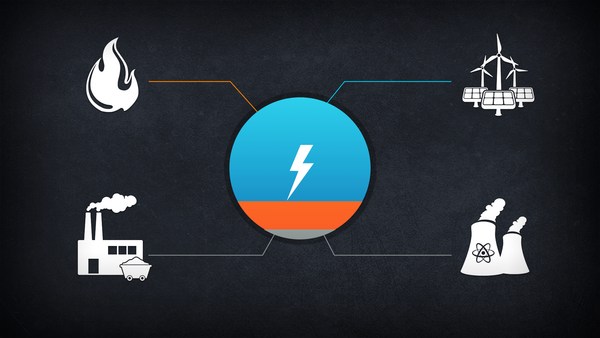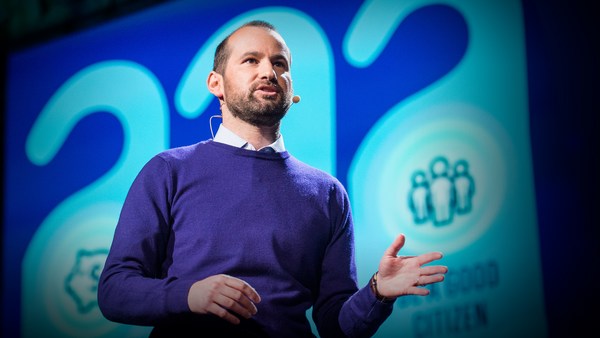Our modern world was built on fuel. History has been determined by who finds, who controls and who burns the dominant fuel of the age. So the past makes sense when you look at it wearing fuel-tinted glasses. And these are not just a really great fashion accessory for this year’s Fyre Festival. They are, in fact, essential safety equipment for our leaders, as they seek to shape history.
In the 1970s, for example, the oil cartel OPEC, led by Saudi Arabia, tried to cut off the supply of oil to the United States. Caused an instant panic, a recession within months. Trump was 27 when those lines of cars snaked around the block. Putin was 21. Xi was 20. Our leaders understand, in their bones, their power comes from fuel.
But now, we're in the midst of the next great energy transition. So who will control the future of clean energy? Who will be the Saudi Arabia of this transition? Well, through fuel-tinted glasses, the answer seems obvious. It's whoever controls the copper, the lithium, the graphite, the cobalt, the rare earths, the critical minerals that we need. But our fuel-tinted glasses are broken, because this is the first transition not to another dominant fuel, but to a technology, and that changes everything.
Now I've spent a lot of time thinking about what this means. Our team is building one of the largest distributed renewable energy utilities for Africa. CrossBoundary Energy uses on-site solar batteries and wind to bring cheaper, cleaner and more reliable power to businesses, and CrossBoundary Access uses the same technologies to bring first-time power to some of the 600 million people living on this continent without it. And here is what I have learned at the silicon face of this transition. Unlike fuel, technology is less existential. It's more circular. It's more fungible, and it's more abundant. So I can use one of our projects to explain how this works. This is Tolagnaro in Madagascar. It's a remote town of 55,000 people, next to a major critical minerals mine. Power for the mine and the community, until recently, came from heavy fuel oil generators on the mine site. Now, CrossBoundary powers the mine with a renewable energy microgrid made up of solar, wind and batteries. Soon, we hope that we will be able to phase out the generators altogether.
Now, let me tell you a story. Imagine two cartels. One is real, OPEC, which seeks to control the price of oil. The other is an imaginary alliance of the major miners of copper and lithium today. Chile, China and Australia. Now if you want to run a good cartel, everyone knows you need to have a great acronym. And so let’s call it the “pisco sour, Peking duck, Foster’s” cartel, or PPF for short. Now let's imagine that each cartel, OPEC and PPF, seeks to cut off the supply of their respective commodity to the rest of the world. In Tolagnaro, before our energy transition, this would have caused an instant crisis. Without oil, the lights in the community go out and the mine shuts down. But after the transition, nothing much changes in Tolagnaro. And that's because in a fuel-based world, constant supply of fuel is existential. But in a technology-based world without a constant supply of lithium, your old lithium batteries keep working. You don't need a constant supply of new copper for your copper wires to keep conducting electricity. You do not require a constant supply of new materials just to survive. But technology gets even better than that, because it is also more circular. Approximately zero percent of the energy from oil can be recycled. You burn it, it's gone. But we don't burn technology ... we use it. And so over 90 percent of renewable energy technologies can be recycled. That wind turbine I showed you earlier is actually a refurbished turbine shipped to Madagascar from Italy. And it works buono. Although it gesticulates more than our technical team initially expected.
(Laughter)
By 2050, there could be so much recycled supply that demand for new input materials could actually begin to decrease. But it gets better than that, because technology is also more fungible. Now, I'm not actually talking about mushrooms here, but the effect is magic, because almost every input into this energy transition can be substituted for another abundant material. Copper can be replaced by aluminium. Cobalt can be replaced, in batteries, by iron, and those substitutions have already happened when, temporarily, prices spiked. So even without access to a specific critical mineral, the power of fungibility means that you can continue to grow.
Now, hopefully, you're beginning to feel somewhat convinced that demand for new material will be fundamentally different in this transition because it is less existential, more circular, more fungible, and those things together mean that it is more flexible. It is more elastic. But we do still have a lot of energy transitioning left to do. So we do need new supply.
And so here is my final piece of good news. The materials that we need for this energy transition are abundant. First, we need less stuff. From now until 2050, we need to extract, every year, around 230 million tonnes of end-use materials. So it sounds like a lot. But every year, currently, we extract over eight billion tonnes of coal. Every year, we extract five billion tonnes of oil and three billion tonnes of natural gas, every single year, just to fuel our existing energy system. So that 230 million looks manageable. Now we are going to need more of material like copper, lithium, graphite, cobalt. But this is the second point of relative abundance. We've got plenty of this stuff. When geologists estimate the likely resource, they show that it easily exceeds our projected demand. Even rare earths are not rare. They were called rare because they were rarely found in their pure form. They were always found with another material. So sure, they're rare, but they're rare in the same way that Bert is rare without Ernie. But is oil very different? Our identified resource of oil is actually pretty abundant relative to demand as well. And our identified reserves of oil are held, similarly to critical minerals, in a very concentrated set of hands.
So what is different? Well, two things. One, the resource that we have identified of oil is the result of searching for it intensively for over 100 years. And we know that oil in general is quite rare in the Earth's crust. We know that most critical minerals are actually geologically abundant in the Earth's crust, and we've really only just begun exploring for many of them at scale. So it's extremely likely that if we try, we can diversify. But second, if we're confronted with the behavior of a PPF-style cartel, that angry kangaroo who I think maybe was a little bit drunk ... the elasticity of demand gives us the time and the leverage that we need to break the cartel or diversify our supply. Now, there will be short-term mismatches between supply and demand, but control really matters when supply is scarce and demand is inelastic. When supply is abundant and demand is elastic, control will always be temporary.
Here's one final piece of evidence that can tie all of this together. Can you name me a successful cartel for an energy-transition mineral? Have you, for instance, heard of these famous copper cartels, the Secrétan Copper Syndicate, the Amalgamated Copper Company, the Copper Exporters Association, the Copper Exporters Incorporated and the not particularly creatively named International Copper Cartel.
(Laughter)
These are all real cartels, and they all failed, because when supply is abundant and demand is elastic, a cartel has the lifespan of your average "Game of Thrones" character.
(Laughter)
There will not be an OPEC for renewables. OK, fine. But won't there be a Saudi Arabia of manufacturing in this transition? Well, no, at least not for the same reasons. Because manufacturing is effectively abundant, your ability to manufacture does not constrain my ability to manufacture. It's not zero-sum. Nobody can stop you from making solar panels. Now building, being good at building and making things creates wealth, and wealth can lead to power. But in this transition, it matters so much less what you have and so much more what you do.
The great nations of tomorrow will not be those that focus on controlling materials and constraining the growth of others. The great nations of tomorrow will be those that focus on their comparative advantage. Identify and unlock the resources that we'll all need. Invent, build and manufacture the technology that we'll all need, and then sell it at great prices, terrific prices --
(Laughter)
to the rest of the world. That's what policymakers should focus on, not annexing another source of not particularly rare earths. The leaders we need now are explorers ... not exploiters. They are builders, not worriers. And they are innovators, not conquerors. So let's take off those fuel-tinted glasses together.
Who will control the future of clean energy? Well, the answer is nobody. And the answer can be everybody. Because the future of energy is not controlled. It's shared. It's not extracted, it's built, and it can belong to all of us.
Thank you.
(Cheers and applause)
